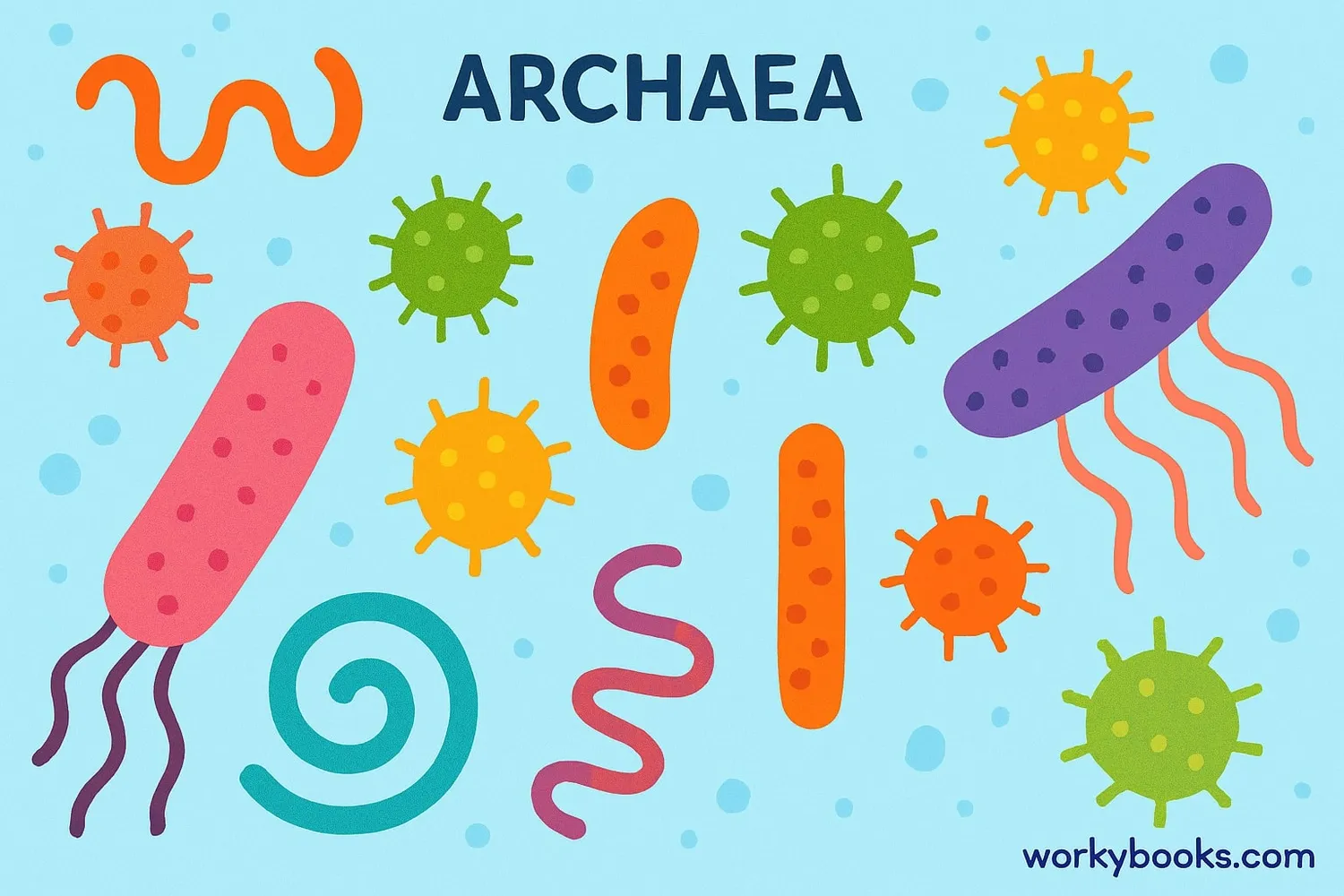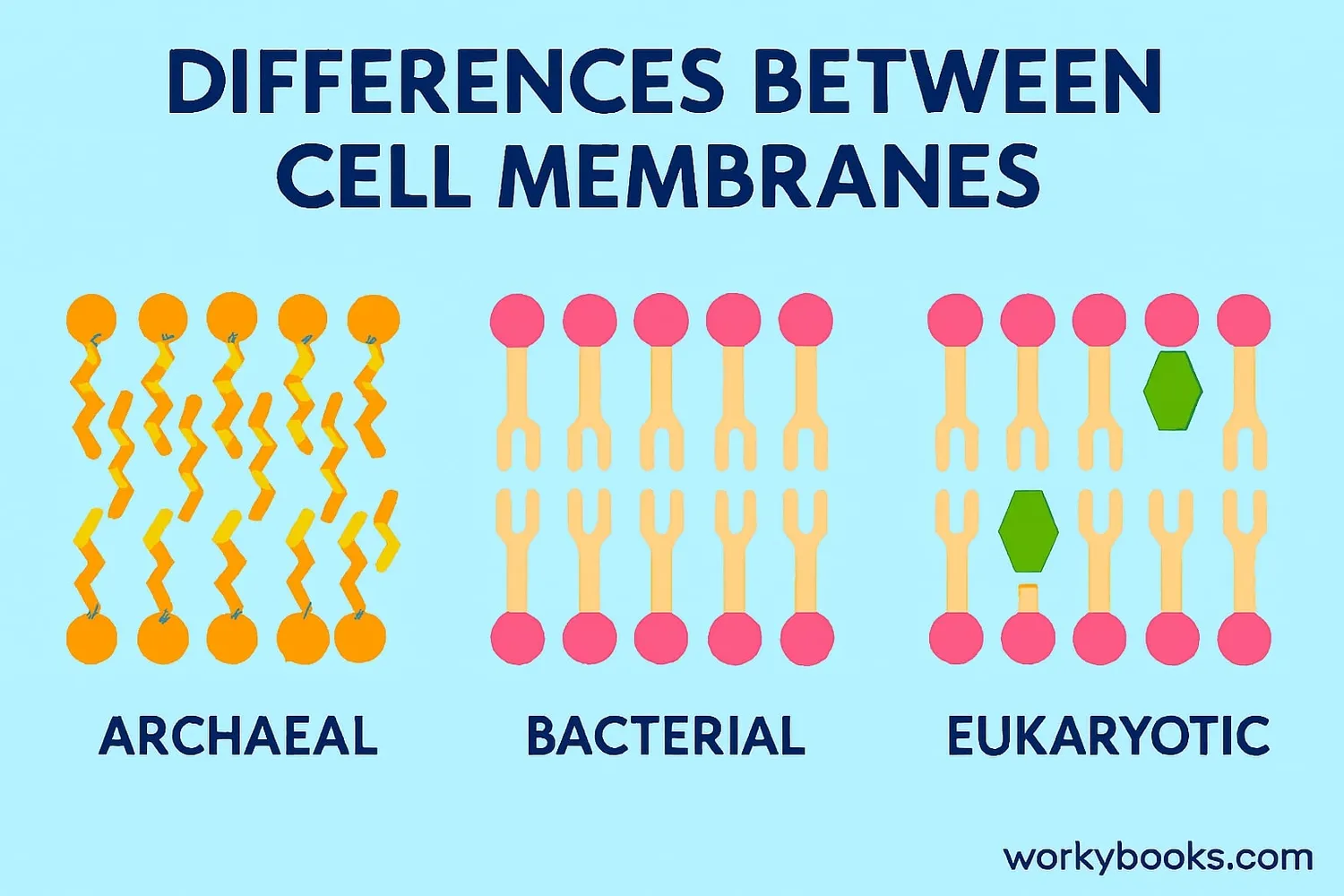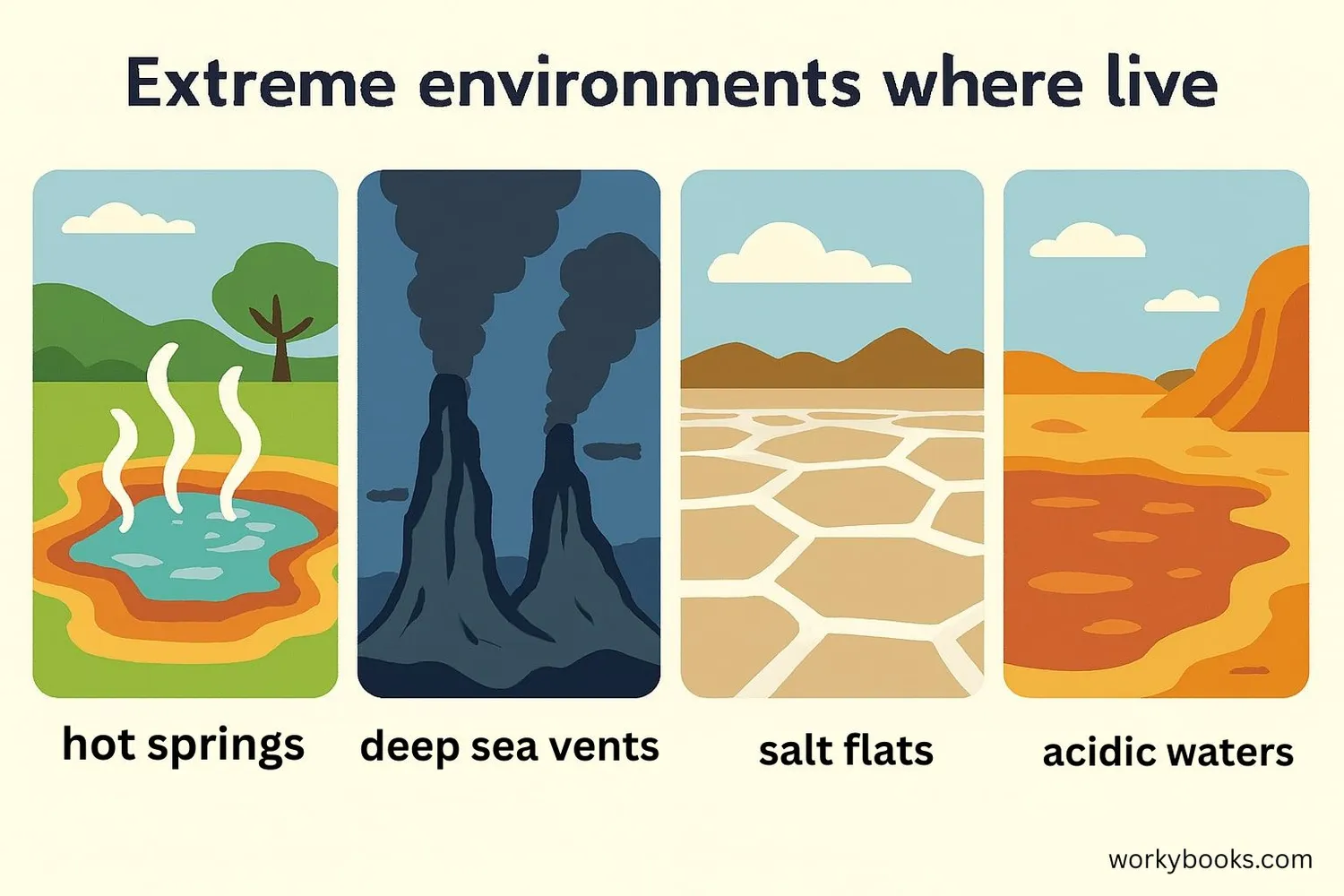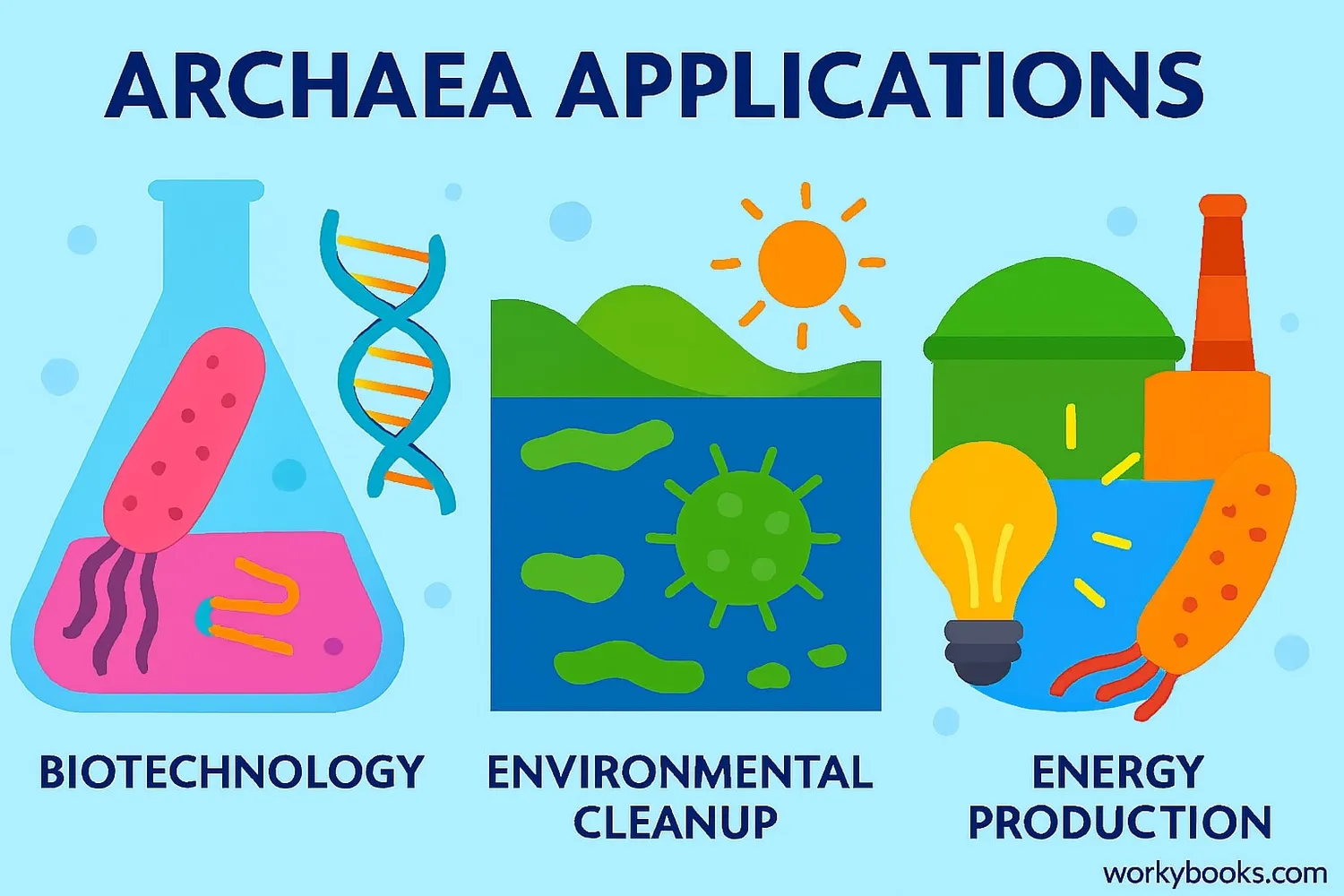Archaea - Definition, Examples, Quiz, FAQ, Trivia
Discover the fascinating world of archaea - tiny organisms that thrive in extreme environments!
What are Archaea?

Archaea are tiny, single-celled microorganisms that form one of the three domains of life, alongside Bacteria and Eukarya. They were first discovered in extreme environments and were originally thought to be bacteria. Scientists later realized they are completely different!
These amazing organisms are some of the oldest life forms on Earth, with fossils dating back over 3.5 billion years. Despite their simple structure without a nucleus (prokaryotic), archaea have unique characteristics that allow them to survive in places where most life cannot exist.
Discovery Fact!
Archaea were not recognized as a separate domain until 1977 when Carl Woese and George Fox used genetic analysis to show they were different from bacteria.
Unique Characteristics of Archaea

Archaea have several special features that make them different from bacteria and other microorganisms:
Cell Membranes
Their cell membranes have unique lipids that are chemically different from those in bacteria and eukaryotes
Cell Walls
Unlike bacteria, archaea cell walls don't contain peptidoglycan
Genetics
Their DNA replication and gene expression are more similar to eukaryotes than bacteria
Extreme Survival
Many can live in extreme conditions that would kill other organisms
These special characteristics help archaea survive in some of the most challenging environments on Earth, from boiling hot springs to extremely salty lakes. Their ability to thrive where nothing else can makes them incredibly important for understanding the limits of life.
Types of Archaea

Archaea are classified based on the extreme environments where they thrive. The main types include:
Thermophiles
Heat-loving archaea that live in hot springs and hydrothermal vents (up to 122°C/252°F!)
Halophiles
Salt-loving archaea that thrive in extremely salty environments like the Dead Sea
Acidophiles
Acid-loving archaea that live in highly acidic environments (as low as pH 0)
Methanogens
Produce methane gas and live in environments without oxygen like swamps and animal guts
Not all archaea are extremophiles though! Scientists have discovered that archaea also live in more normal environments like soil, ocean water, and even inside our bodies. They play important roles in these environments too.
Extreme Survivors!
Some archaea can survive radiation levels that would be instantly fatal to humans, making them incredibly tough microorganisms!
Why Archaea Matter

Archaea are much more than just interesting microscopic organisms - they play crucial roles in our world and have important applications:
Nutrient Cycling
They help recycle important elements like carbon and nitrogen in ecosystems
Biotechnology
Their enzymes are used in DNA amplification (PCR) and other scientific processes
Environmental Cleanup
Some can break down pollutants and help clean contaminated environments
Archaea also help scientists understand how life might exist on other planets! Since they can survive extreme conditions similar to those on Mars or Jupiter's moon Europa, studying archaea gives us clues about what extraterrestrial life might look like.
Additionally, methanogenic archaea in the digestive systems of animals (including humans) help with digestion, but they also contribute to greenhouse gas emissions through methane production.
Archaea Knowledge Check
Test what you've learned about archaea with this quiz! Answer all 5 questions to check your understanding.
Frequently Asked Questions
Here are answers to some common questions about archaea:
Archaea Trivia
Discover some amazing facts about archaea!
Extreme Survivors
Some thermophilic archaea can survive temperatures above 120°C (248°F) in deep-sea hydrothermal vents! That's hotter than boiling water.
Ancient Life
Archaea are among the oldest life forms on Earth, with fossil evidence dating back more than 3.5 billion years. They've survived multiple mass extinction events.
Scientific Revolution
The discovery that archaea were a separate domain revolutionized biology and changed how we classify all life on Earth. This happened surprisingly recently in 1977!
Lab Superstars
Enzymes from heat-loving archaea are used in PCR (Polymerase Chain Reaction), a technique that amplifies DNA and is crucial for genetic research, medical testing, and forensic science.


